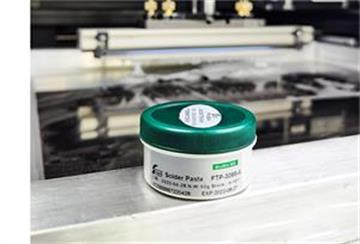PCB Hot Air Solder Leveling Process Introduction_Shenzhen Fitech

PCB Hot Air Solder Leveling Process Introduction - Shenzhen Fitech
1. What is tin spraying/hot air leveling
Tin spray/hot air leveling (HASL) is a PCB surface finish. The tin-lead layer on the PCB copper surface can protect the solder pad from oxidation and maintain the solderability. The liquid solder used in HASL is usually composed of 63% tin and 37% lead. During SMD soldering process, the HASL layer is dissolved with the solder paste. The HASL boards occupied a leading position in the electronic manufacturing industry before the development of lead-free technology. At present, although its usage has declined, it is still widely used in medical, military, aerospace, and other fields.

Figure 1. HASL surface finish layer.
2. HASL processes
The PCB needs to be cleaned before HASL. The copper surface needs to be cleaned by micro-etching treatment. After pre-clean, the PCB should be preheated and coated with the solder flux. The flux can reduce the surface tension between the PCB and the solder, allowing the solder to better cover the PCB. After the soldering flux is applied, the PCB needs to be immersed in the molten tin/lead solution. The exposed copper pads will be covered by the tin-lead solution and form a tin-lead layer. After the tin-lead layer is formed, the high-pressure hot air knife removes the excess solder on the PCB surface and in the hole to ensure the uniformity of solder deposition, thus leaving a uniform and thin protective layer on the pads.
HASL process parameters include solder temperature, solder dipping time, hot-air knife pressure, hot-air knife angle, hot-air knife spacing, and PCB rising speed.
Solder temperature: the melting point of solder Sn63Pb37 is 183℃. To ensure good intermetallic compound formation, the temperature of solder is generally controlled at about 230-250℃.
The solder dipping time is generally controlled at 2-4s. Excessive growth of intermetallic compounds occurs due to long dipping time.
The greater the pressure and flow rate of the hot air knife, the smaller the thickness of the solder coating. To achieve high HASL quality, the pressure of the hot-air knife is controlled at 0.3-0.5MPa.
Improper angle of the hot-air knife will lead to inconsistent coating thickness on both sides of the PCB. Most hot-air knives will be adjusted downward by 4°.
The common distance between hot air knives has a range from 0.95cm to 1.25cm.
The PCB rising speed needs to be controlled according to the actual situation. The slow rising speed will increase the hot air treatment time, which reduces the solder layer thickness and vice versa.
3. Comparison of different PCB surface finishes
Generally speaking, the reliability of the solder joint of HASL boards and OSP solder joints is similar. The intermetallic compounds formed during soldering are both Cu6Sn5 and Cu3Sn. Additionally, the thickness of the HASl layer is often larger than that of organic solder protection film (OSP), electroless nickel immersion gold (ENIG), immersion tin (ImSn), and immersion silver (ImAg), but the cost of HASL is lower than others.
Table 1. Thickness of different surface finishes.

4. Advantages and disadvantages of HASL
The obvious advantages of HASL plate are consistent coating composition, long service life, and wide PCBA baking and cleaning window. However, the surface flatness of the layer prepared by the HASL process is poor, which reduces solder paste printing and reflow quality. However, ultra-fine-pitch soldering requires a relatively high quality of solder paste printing and reflow. Thus, the PCBs for ultra-fine-pitch products usually adopt ENIG rather than HASL.
Shenzhen Fitech is committed to producing ultra-fine (T6 and above) solder pastes for ultra-fine-pitch soldering. Fitech’s solder pastes have excellent printability/dispensing ability, stable viscosity, long on-board time, and can produce uniform and high mechanical strength solder joints on the PCB pads. Welcomes to contact us for cooperation.



















 Back to list
Back to list



